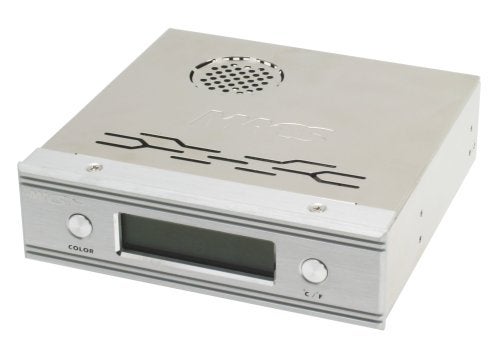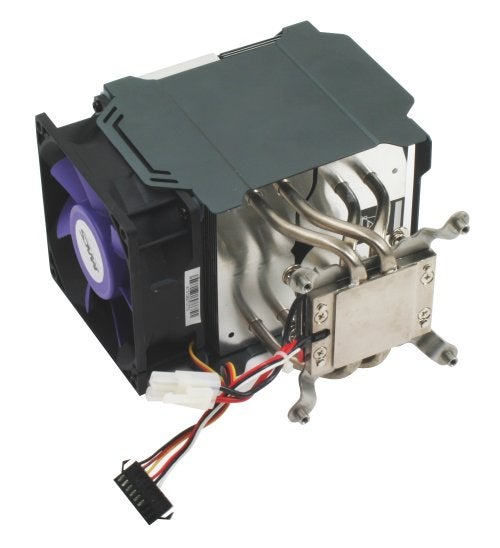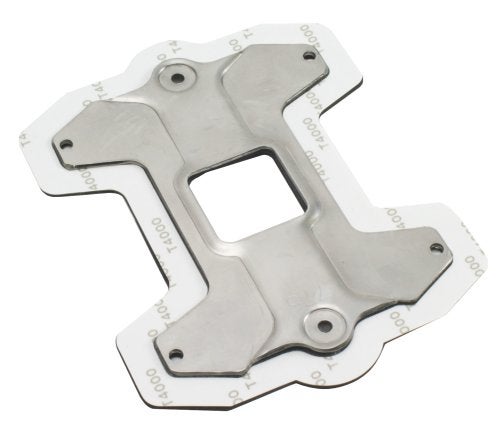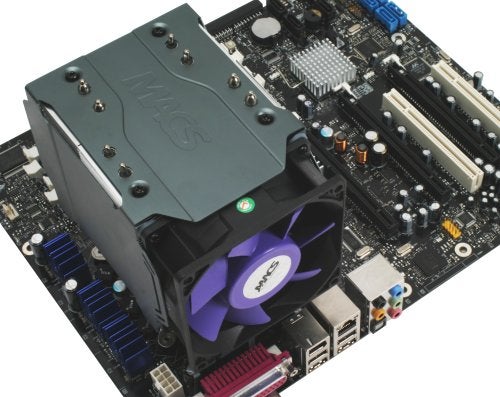MACS Triumph MA-7131-i TEC Cooler Review
MACS Triumph MA-7131-i TEC Cooler
Spode sees what happens when you take a TEC based air cooler and stick it on a Core 2 Extreme QX6700.

Verdict
It feels like only yesterday that I killed my Celeron 400A, by de-capping it and it putting on a TEC back to front. If this wasn’t in a dual processor machine, I would have been pretty upset, as having no computer when you’re 15 is a bit of a downer.
A TEC, is of course a Thermo-Electric Cooler. A quick search for TEC, or the Peltier effect on Google will very quickly bring up more information on how this works than you’d ever wanted. Essentially, it is an electric powered heat pump. Typically, when used with a computer’s CPU, it is a 40mm ceramic sandwich, that fits in between the CPU heatsink and the CPU itself. The cold side cools the processor and then the heatsink cools the hot side.
TECs are incredibly inefficient, so generate a lot more heat that they actually pump. There is also an issue of condensation, as a powerful enough TEC can bring a CPU well below ambient temperature.
TEC’s are fiddly, annoying and dangerous. 10 years ago, they were reserved for only the most daring, and generally for people using water coolers, due to their much better ability to cope with heat. When a TEC fails, it’s bad news, as you’re left with a ceramic block inbetween your CPU and heatsink. Ceramic is a very good insulator, but an incredibly poor conductor, naturally.
So to be approached by what seems to be a professional outfit, about a heatsink and TEC combo, I was a little surprised. The cooler I’m looking at, is the MA-7131-i, by MACS. This promises to dramatically reduce processor temperatures. 
In order to cope with condensation issues, the cooler has a control unit that fits in to a 5.25in bay. This requires a Molex connector to power it, which in turn powers the cooler and TEC as well. The two buttons on the front allow you to cycle through the different backlight colours of the LCD, and change between Celsius and Fahrenheit. Implanted on the cool side of the TEC is a thermistor. The control unit uses this to gauge how much cooling needs to be done. This is a way of preventing condensation – if the temperature starts to get too cold, it will switch off the TEC and lower the fan speed. 
Annoyingly, the thermistor is rather delicate and during the installation of the cooler, I managed to snap all 3 legs off of it, as there were wires leveraging off it. This is poor design and I imagine I wouldn’t be the only person to do so.
This has the effect of telling the unit that it runs too hot and leaving the TEC and fan on maximum. It also sets off the alarm which constantly beeps every 5 seconds. If this were an alarming situation, I would be grateful of being told – but as it’s not, it’s incredibly annoying. I remedied this, by opening up the unit and disconnecting the PCB with the LCD panel and alarm on. This didn’t affect the power circuitry at all, but merely shut the thing up.
This is a dangerous scenario to be in. If my computer went in to suspend, the TEC would keep going, while the processor would be giving out little or no heat. This would result in ice forming on the motherboard – which is deadly!

Mounting the cooler was quite a task. In order to do so, you have to remove the motherboard from the case. Above you can see the plate which goes on the underside of the motherboard. You then need to apply thermal paste to the CPU and screw in four screws from the underside of the motherboard, in to the cooler itself. This is particularly difficult, purely because of the size of the cooler.
Once affixed, the cooler isn’t going anywhere. As it weighs close to 1kg, MACS has actually supplied cables that can be fitted in your case to take some of the strain. As we were using an open aired test-bed, this wasn’t necessary. But it’s a nice idea, as too much stress on a motherboard can cause micro-fractures in the traces on the PCB.
Another issue I came across when fitting the cooler, was the connector for the TEC. It can fit in to the control unit either way around. The first way I plugged it in (which looked right), was incorrect and I noticed that the heatsink was getting cooler instead of warmer. I then quickly turned it around, but someone less experienced could have very quickly cooked their CPU to a crisp.
The manual wasn’t as good as it could have been, with no troubleshooting section, or FAQ. The web site was no extra help either. A forum would have been nice, for at very minimum discussing issues with other people who owned the product.
We tested the cooler with a Core 2 Extreme QX6700, which is a quad core processor. None of the Core 2 range run particularly warm, but this is without a doubt the warmest, purely due to the number of cores.
Using the MACS cooler, we overclocked the CPU to 3.73GHz (from 2.66GHz) using 1.55V. It wasn’t quite stable in all tests, suggesting that one of the cores wasn’t happy. However, it was still a good way of measuring cooling ability.
At this speed, the CPU was 64c at 100% load on all four cores. For comparison, the incredibly loud cooler that Intel supplied also ran at 64c. However, from an efficiency point of view, the MACS cooler was superior, as the surrounding (and therefore incoming) air was 54c, while the standard air cooler had air at 33c.
This does however, illustrate a very important point. The TEC inefficiency means there is a lot more heat being generated on the other side of the CPU. Ours was an open test bed and it still couldn’t cope with the extra heat. This means the VRMs and graphics card were significantly warmer than normal. In a case, temperatures would escalate very quickly indeed. If you are intending on running this cooler – you better have decent enough case cooling to cope with the extra heat generated.
If (and that’s a big if) you can remove all the extra heat being generated, the high efficiency of this cooler means that you could lower CPU temperatures considerably. Traditionally, and for good reason, water cooling is still the best solution for this, as the heat is taken outside of the case.
”’Verdict”’
MACS have attempted to make TECs accessible to everyone. They have succeeded, but in most cases (pun intended) the results will be no better than a normal air cooler and in many scenarios – worse. If you are serious about TECs, get a water cooling kit!

